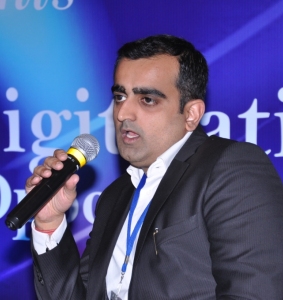3G SIMs are expected to grow from 35 million in 2012 to about 272 million by 2017 as more and more high-end 2G users upgrade their services, according to Analysys Mason.
Analysys Mason says the growth will be driven by wider network coverage, better affordability of 3G services and increasing affordability of 3G capable devices.
In an interaction with TelecomLead.com’s chief editor Baburajan K, Rohan Dhamija, head, India and South Asia — Analysys Mason, said the current data usage on 3G to almost double from 475MB/sub/month in 2012 to 890MB/sub/month by 2017.
3G growth drivers
As witnessed in global markets, an increase in smartphone penetration results in higher 3G penetration. Even in India, smartphone affordability will be the key driver for uptake of 3G. Currently only 4 percent of the total population has a smartphone, an installed base of 45 million in 2012. Among these, only 40 percent are capable of providing an optimum 3G experience, as defined by device specifications (referred to as high-end smartphones). The current base of 3G subscribers is largely within these high-end smartphones as remaining users do not see the value of upgrading to a 3G plan if the device is unable to provide a 3G quality experience.
Thus far, 2013 has seen several new launches of affordable high-end devices by device OEMs as well as increased availability of easy financing options, which are promoted aggressively by TV and print campaigns. This increase in device affordability and rising popularity is expected to provide momentum to this growth, with the installed base of smartphones expected to reach 73 million by the end of 2013.
3G and Internet data growth
India’s internet growth will be primarily driven by mobile technology given the uptake of fixed internet limited to only top urban cities due scalability issues. With EDGE / GPRS unable to provide adequate throughput for data, uptake of 3G will be the main driver for internet growth in India in the medium as well as long term. We expect the fixed line internet connections to grow slightly from 15 million in 2012 to 26 million by 2017, against the 3G connection exponential growth from 35 million in 2012 to 272 million by 2017.
“Moreover, as consumers start using more data intensive applications especially video, we expect the current data usage on 3G to almost double from 475MB/sub/month in 2012 to 890MB/sub/month by 2017,” Rohan Dhamija said.
Operators’ 3G strategies
Operators have a three-fold strategy across service pricing, coverage and content, to increase 3G growth in India:
Service affordability: Operators have reduced the 3G service pricing significantly. At the launch of 3G, 2G and 3G price differential was about 8x. This has reduced to about 1.3x primarily on account of decline in 3G tariffs, with an increase in 2G prices also playing a role in reducing this gap. Given this reducing price differential, and the fact that data tariffs in India are already one of the lowest in the world, we do expect another significant decline in 3G tariffs from operators.
Coverage: Given high spectrum prices, operators have initially been selective in their 3G deployments, limiting to metros / tier1 cities, with somewhat patchy to begin with. However operators will now need to improve and expand coverage into Tier 2/3 cities to increase their reach.
Content: Operators are actively collaborating with content / app developers to provide relevant content to the consumers across the realm of education, healthcare and entertainment.
These strategies are bearing good results for the operators, with the 3G SIMs increasing from 9.3 million in 2011 to 21 million in 2012.
3G growth
Although the leading operators have launched 3G across various cities, a lot of these places have patchy coverage, with optimum coverage restricted to dense urban areas in metros and tier-1 cities. Tablets are a much smaller market as compared to smartphones, with an installed base of only 4 million in 2012. Moreover, a large proportion of these being Wi-Fi only devices, and hence not using 3G data SIMs.
Operators plan rural 3G
In order to take 3G to the masses, operators will need to improve network coverage in and beyond metros / tier-1 cities. The reduction in 3G service pricing by operators and device pricing by OEMs will further assist in driving the uptake of 3G in tier 2/3 cities. We believe that all dense urban and urban areas will be covered by 2017, with remaining suburban areas / towns to be covered by 2018. Rural coverage is expected to begin in 2017, with about 50 percent rural population coverage achieved by 2020.
Forecast of 3G
3G SIMs are expected to grow from 35 million in 2012 to about 272 million by 2017 as more and more high-end 2G users upgrade their services. This growth will be driven by wider network coverage, better affordability of 3G services and increasing affordability of 3G capable devices.
Social media has had a significant role to play in the 3G uptake, especially among the youth, as they look for uninterrupted connectivity to post pictures and share videos among friends. With youth driving majority of the internet usage, social media still remains one of the leading use cases among 3G users.
NOTE: Rohan leads Analysys Mason’s India and South Asia practice. He has over 12 years of experience advising corporations and investors in the TMT industry on strategic and operational issues. He has extensive experience working in the emerging markets of Asia and Latin America, as well as in developed markets such as the USA.
He is a subject matter expert in topics related to mobile broadband. Specific expertise includes experience in directing engagements around 3G and LTE spectrum valuation, mobile data pricing, managing LTE network roll outs, developing the content and apps strategy for operators across regions, and leading studies around the economic impact of mobile broadband on developing economies.
Baburajan K
[email protected]






